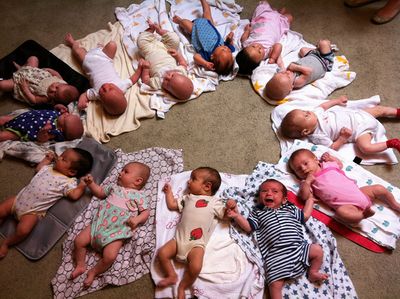A coat made of babies
| This article is illogical enough to have made it onto the front page. View more featured articles • Vote for new featured articles |
In 1779, while reading back issues of pornographic alchemy journals, Issac Newton accidentally discovered that babies make excellent insulation. With the onset of the Industrial Revolution, raw labor thronged mills and factories, made a relative butt-load of money and had babies. Lots and lots of babies.
In fact, for the first time in recorded history, Great Britain had a baby surplus of 73,000. Clothing made from babies began as a cottage industry. Women would gather up their scrap babies in late summer and knit scarves, mittens and socks for the men who would soon be working in the cold.
When society types from London began wearing them in place of coon skin caps and muffs, a demand surged. Old babies were pulled from storage and dusted off to make great coats and stove pipe hats. Beaver populations soared in response to their plummeting value; babies were so much warmer, and didn't require long transport fees to get them to manufacturing, and then to market.
Coats made from babies are considered a luxury item today. Wearing one in public can draw the ire of the occasional militant eco-protester. If spotted, baby coat wearers are splashed with type B negative blood, assaulted with dull axes, transformed into salamanders by wizards or have mustard packets shoved into their ears.
